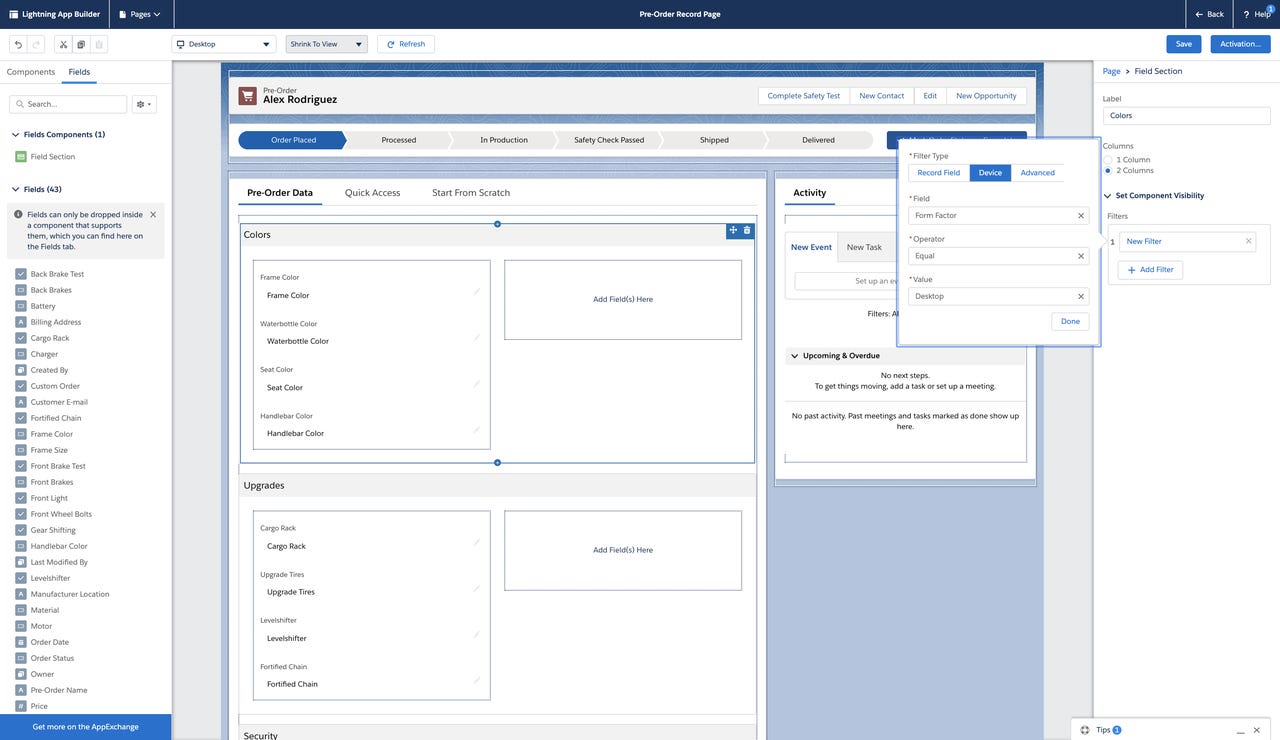Salesforce rolls out new low-code features for Lightning App Builder

Salesforce on Thursday rolled out two new low-code features for Lightning App Builder, the point-and-click tool customers can use to create custom pages for the Salesforce app. The new features, Dynamic Forms and Dynamic Actions, are designed to help users build forms and pages that are event-driven and change in real time. Salesforce says they come highly requested.
With Dynamic Forms, users can easily create forms that change as people fill them out. You can place fields and sections anywhere on the page, and you can set rules to only show certain fields based on other field values.

Dynamic Forms
Enterprise Software
For instance, for forms related to job candidates, you could set visibility rules based on an employee's role. Different employees (whether it's HR officials, recruiters or interviewers) would only see certain information about a job candidate (like job history, legal status, references, etc.).
Dynamic Actions, meanwhile, guide end users through an experience with intuitive next steps. To stick with the hiring example, you could assign specific actions for each person involved in the hiring process. You set the rules for when actions are shown based on field values or user information.
Low-code and no-code tools have been growing in popularity in recent years, enabling people with little or no coding experience to be able to build the applications they need. With IT teams stretched thin during the COVID-19 pandemic, interest in low-code tools may grow faster than expected.
Salesforce, for its part, noted surging interest in Flow Builder, a low-code tool that helps users create automated business processes. In March 2020, Salesforce saw more than 3.25 billion processes automated, an increase of 25 percent compared to the year prior.